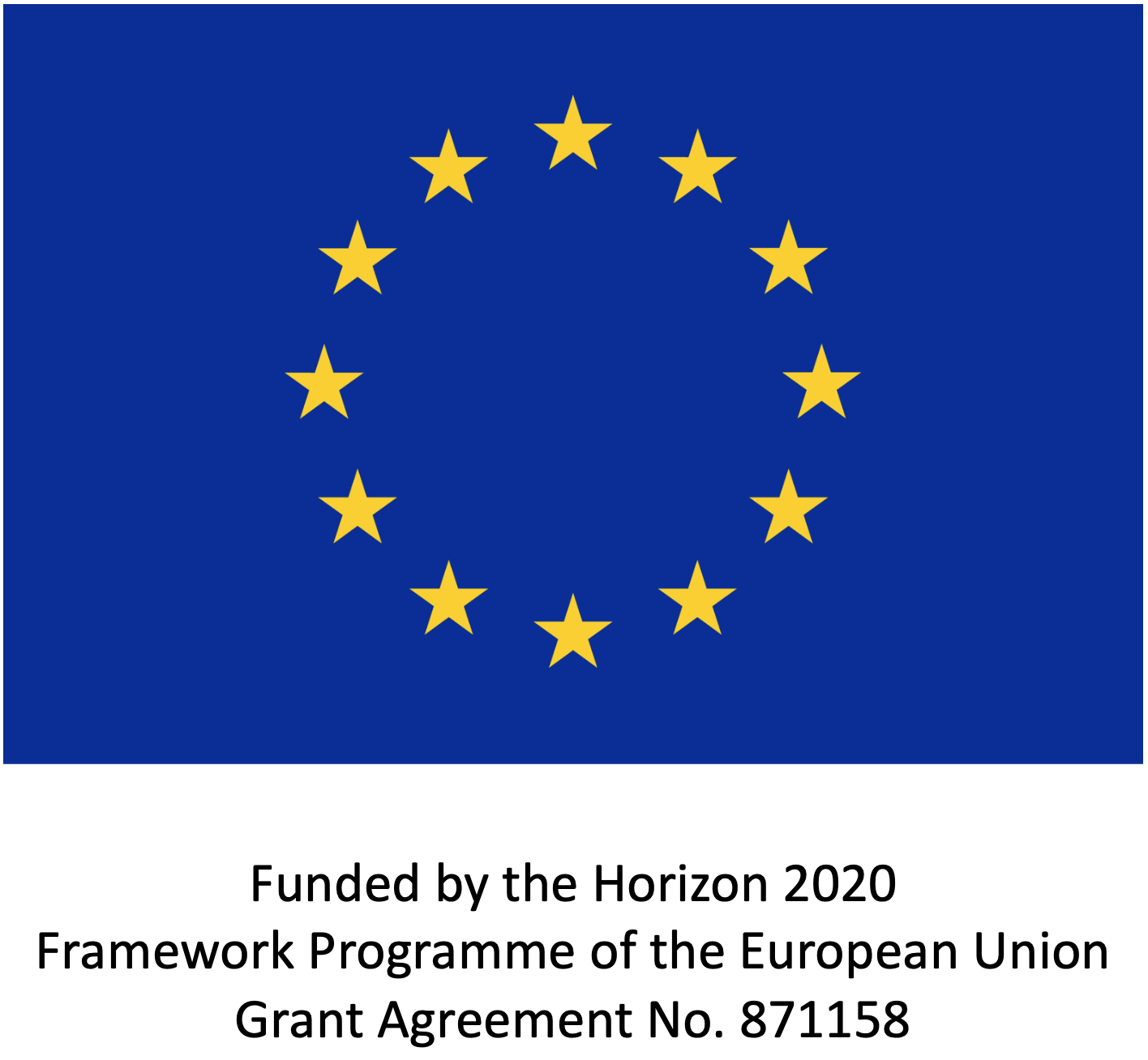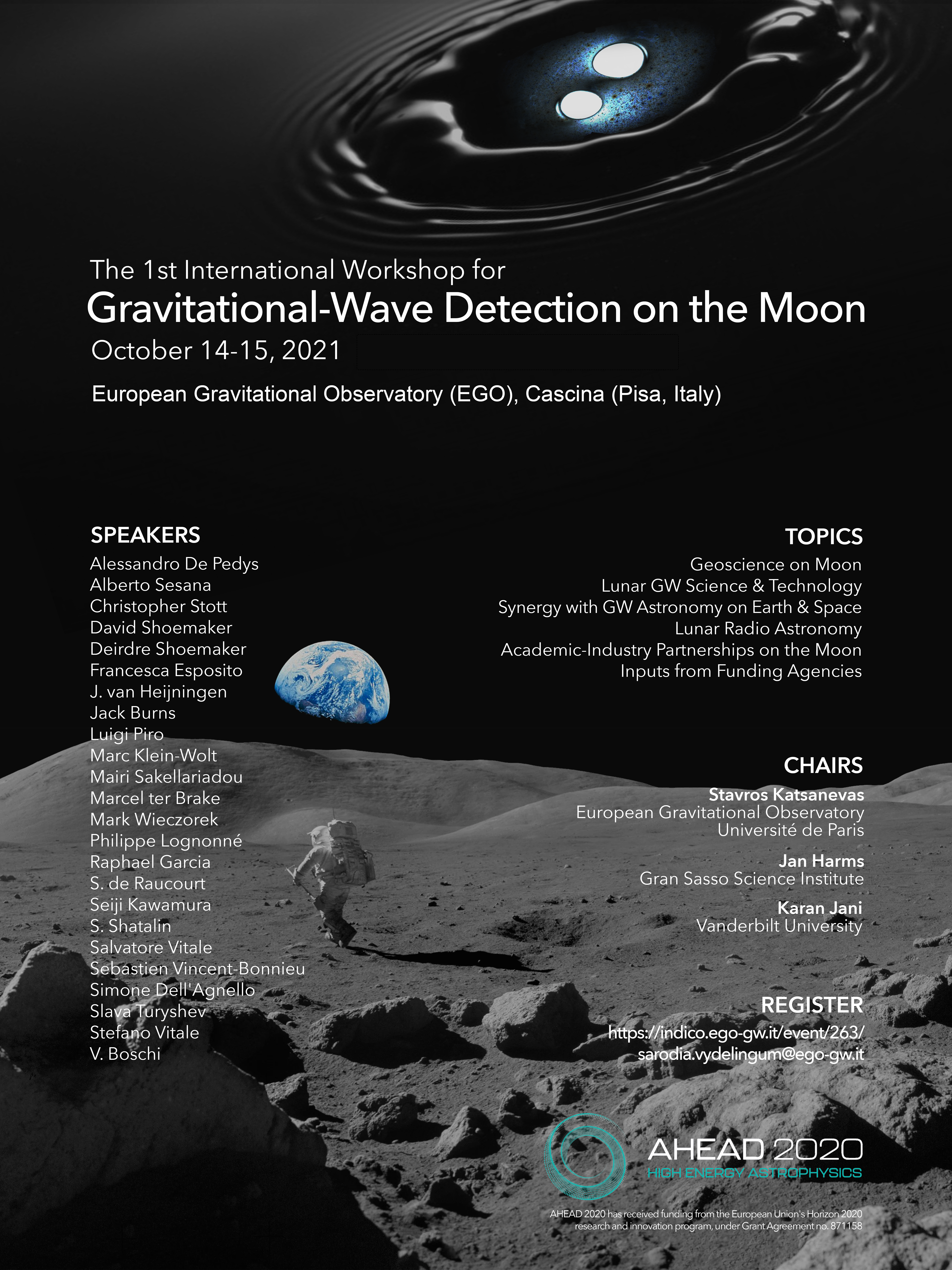For the first time, experts from around the world discussed, in a workshop at the European Gravitational Observatory near Pisa, the possibility of detecting gravitational waves on the Moon: a scenario that could turn out to be more achievable than expected.
On 14th and 15th October, the European Gravitational Observatory (EGO) hosted the first International Workshop for Gravitational Wave Detection on the Moon. Led by researchers at EGO, Gran Sasso Science Institute, and Vanderbilt University, the event attracted leading experts from the fields of gravitational wave science, planetary science, and lunar exploration to discuss the opportunities and challenges of building a gravitational wave (GW) observatory on the lunar surface.
Important topics addressed included the question about the geophysical properties of the Moon and about the limitations and advantages (such as the extremely low seismicity) of the lunar environment for this type of observation. Opportunities for breakthrough science with lunar GW detectors were identified and possible synergies with other future detectors were discussed like the joint European Space Agency and NASA space mission LISA and the proposed terrestrial detectors Einstein Telescope and Cosmic Explorer. The presentation of three proposed technological concepts for lunar GW detection, called LGWA, LSGA and GLOC, concluded the first workshop day. It was highlighted that lunar GW detectors can cover the unexplored deci-hertz observation band between LISA and terrestrial detectors, which would conclude a decades-long search for a feasible detector concept in this band.
The access to this unexplored frequency range could help us to detect white dwarf mergers, potentially associated with supernovae; or even to predict the merger of two neutron stars months in advance by being able to point telescopes at the binary pair before merger for deep astrophysical studies. In general, access to a wide band of frequencies would give us a more complete understanding of the astrophysical property of the sources , while the geocentric orbit of the Moon around Earth would significantly increase our ability to triangulate the sky position of the sources.
The second day started with a presentation of key technologies that are under consideration for lunar GW detectors, some of them already being at an advanced state of development. Representatives of some of the main European Research institutions, such as INFN, CNRS, European consortia of Agencies (APPEC), representatives of US roadmap exercises, ESA and NASA responsibles emphasized that lunar gravitational wave detection, as one of the frontiers in physics, should be presented to the ongoing evaluation programs for future space science missions and that the realization of such a project could become realistic in the context of international cooperation.
“The workshop attendance far exceeded my expectation, demonstrating the worldwide interest in GW science and lunar exploration,” declared Jan Harms, professor at the GranSasso Science Institute. “We now need to work hard to seize the opportunities given to us to realize a first lunar GW detector. Turning our Moon into a resonant antenna for messages from the Universe would be an historical achievement.”
“We were all impressed by the quality of the presentations, key elements of which were the interdisciplinarity between Gravitational wave science and Geoscience, the complementarity of the proposed instrumentation guaranteeing the detailed understanding of lunar vibrations,” said Stavros Katsanevas, EGO director. “The attentive attitude of high level funding agencies officials is a very good omen for the development of this emerging field.”
“We are at the dawn of a new space-age, with the Moon at the center of our campaign for the next several years. This workshop drew a broad consensus that fundamental physics and astronomy have immense potential on the Moon,” said Karan Jani, research assistant professor at Vanderbilt University (USA) and co-chair of this workshop. “The lunar GW detectors can probe the most important questions about our universe, from the nature of dark energy to the birth of the first stars. Many of the required technologies are already being developed by space agencies and major private companies. It’s only a matter of time before we have our graduate students taking shifts on the Moon!”
The workshop has been supported by the AHEAD 2020 project, funded from the European Union’s Horizon 2020 research and innovation program, under Grant Agreement no. 871158
EGO, the European Gravitational Observatory, founded in 2000 by the French CNRS – Centre National de la Recherche Scientifique and the Italian INFN, Istituto Nazionale di Fisica Nucleare, hosts and operates Virgo, one of the three largest and most sensitive gravitational wave detectors in the world, in synergy with the Virgo Scientific Collaboration, consisting of over 700 scientists from 15 countries. EGO also promotes gravitational wave research in Europe. The Dutch National Institute for Subatomic Physics (NIKhef) became a member of EGO at the beginning of 2021.
The Gran Sasso Science Institute (GSSI) is an international PhD school and a center for research and higher education in the areas of Physics, Mathematics, Computer Science and Social Sciences. The GSSI was established as a curiosity-driven science centre, delivering research and training activities in innovative and highly promising fields. Professors, researchers and students from all scientific backgrounds are selected internationally, following the standards set by the best research centers and PhD schools worldwide.
Vanderbilt University, founded in 1873, has forged a tradition of academic excellence infused with a unique spirit of collaboration and collegiality. Our mission lies in the quest to bring out the best in humanity—pushing new ideas into the frontiers of discovery, challenging the limits of what’s possible and working diligently in the service of others. Vanderbilt’s closely connected parklike campus, set in the heart of the rapidly growing city of Nashville, Tennessee, is representative of the enduring bonds that unite us as One Vanderbilt community.




